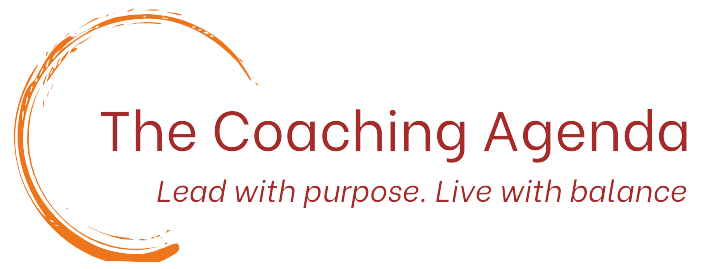Ronald Heifetz’s Leadership Framework: A comprehensive summary
Ronald Heifetz’s adaptive leadership framework has become a cornerstone of contemporary leadership thinking, particularly for those navigating the complexities of organizational and societal change. His work fundamentally distinguishes between technical problems-those that can be solved with existing expertise and procedures-and adaptive challenges, which are ambiguous, complex, and require people to learn new ways of thinking and behaving368. This distinction is at the heart of his approach, and misunderstanding it is, according to Heifetz, one of the most common and costly leadership errors6.
Technical Problems vs. Adaptive Challenges
Technical problems are relatively straightforward: they are easy to identify, have known solutions, and can typically be resolved by an expert or someone in authority. For example, fixing a broken machine or updating a software system are technical problems-there’s a clear path forward and a right answer69. Adaptive challenges, on the other hand, are much more elusive. They are difficult to diagnose, often denied or misunderstood, and cannot be solved by authority or expertise alone. Instead, they require changes in values, beliefs, roles, relationships, and approaches-essentially, they demand learning, experimentation, and a willingness to let go of the past3689.
Heifetz warns that the biggest leadership failure is to treat adaptive challenges as if they were technical problems, applying quick fixes where deeper, systemic work is needed68. Adaptive leadership, therefore, is about mobilizing people to do the difficult work of change-work that cannot be delegated or decreed from above but must be done collectively.
The Balcony and the Dance Floor
A central metaphor in Heifetz’s thinking is the “balcony and dance floor” perspective. The dance floor represents the day-to-day action, where leaders are immersed in operational details and immediate issues. The balcony is a place of strategic observation, where leaders can step back, detach from the fray, and see patterns, relationships, and underlying dynamics that aren’t visible up close32. Effective leaders must move fluidly between these two vantage points-engaging actively in the work while also maintaining enough distance to diagnose challenges accurately and chart a thoughtful course.
Mobilizing People and Creating Adaptive Cultures
Heifetz emphasizes that adaptive leadership is not about having all the answers, but about asking the right questions and creating environments where people can experiment, learn, and adapt together43. This means building a culture where risk-taking is encouraged, failures are seen as opportunities for learning, and diverse perspectives are welcomed-even when they challenge the status quo34. Leaders must be willing to listen to dissent, manage conflict productively, and hold steady in the face of resistance, recognizing that real change is often uncomfortable and slow38.
Authority, Trust, and Organizational Dynamics
In Heifetz’s view, authority is not simply a function of position or expertise; it is relational and depends on the trust and consent of those being led3. When trust breaks down, it often signals deeper adaptive challenges within the organization. Leaders must work to repair and strengthen trust by demonstrating integrity, transparency, and a commitment to collective learning34. They must also recognize that authority is a social contract: people grant leaders power in exchange for direction, protection, and order. Transforming these expectations-especially when they are unrealistic or outdated-is a delicate but essential part of adaptive leadership3.
The Personal Side of Leadership
Adaptive leadership is as much about personal resilience as it is about strategy. Heifetz highlights the importance of self-reflection, patience, and self-discipline. Leaders must balance their own ambitions with the needs of the organization and the well-being of others, finding sanctuaries for reflection and building support systems to sustain themselves through the inevitable stresses of leadership34. He also cautions that not all meaningful leadership outcomes are easily measured-leaders should find satisfaction in the intangible, long-term impacts of their work and celebrate progress, however incremental3.
Conclusion
Heifetz’s adaptive leadership model offers a powerful toolkit for leaders facing complex, uncertain challenges. By distinguishing technical from adaptive work, embracing both strategic observation and active engagement, and fostering cultures of trust, learning, and resilience, leaders can guide their organizations through the discomfort of change toward lasting, meaningful progress3468.
References
Heifetz, R., Grashow, A., & Linsky, M. (2009). The Practice of Adaptive Leadership: Tools and Tactics for Changing Your Organization and the World. Harvard Business Press.23
Corporate Finance Institute (n.d.). The Four Principles of Adaptive Leadership. [online] Available at: https://corporatefinanceinstitute.com/resources/management/adaptive-leadership/ [Accessed 30 Apr. 2025].1
Academi Wales (n.d.). Adaptive Leadership. [PDF] Available at: https://academiwales.gov.wales/api/storage/6c542ed3-e639-48dd-95ff-b1d48e042785/35611_AW_SowingSeeds_Adaptiveleadership_E_WEB.pdf [Accessed 30 Apr. 2025].3
Harvard Business Review (2001). The Work of Leadership. [online] Available at: https://hbr.org/2001/12/the-work-of-leadership [Accessed 30 Apr. 2025].4
Integract (2019). Technical Challenges vs. Adaptive Challenges. [online] Available at: https://www.integract.com/blog/2019/10/28/technical-challenges-vs-adaptive-challenges [Accessed 30 Apr. 2025].6
Kansas Leadership Center (n.d.). Distinguish Technical and Adaptive Work. [online] Available at: https://kansasleadershipcenter.org/distinguish-technical-and-adaptive-work/ [Accessed 30 Apr. 2025].8
Indeed (2025). Adaptive Change vs. Technical Change: Definitions and Differences. [online] Available at: https://www.indeed.com/career-advice/career-development/adaptive-vs-technical-change [Accessed 30 Apr. 2025].
